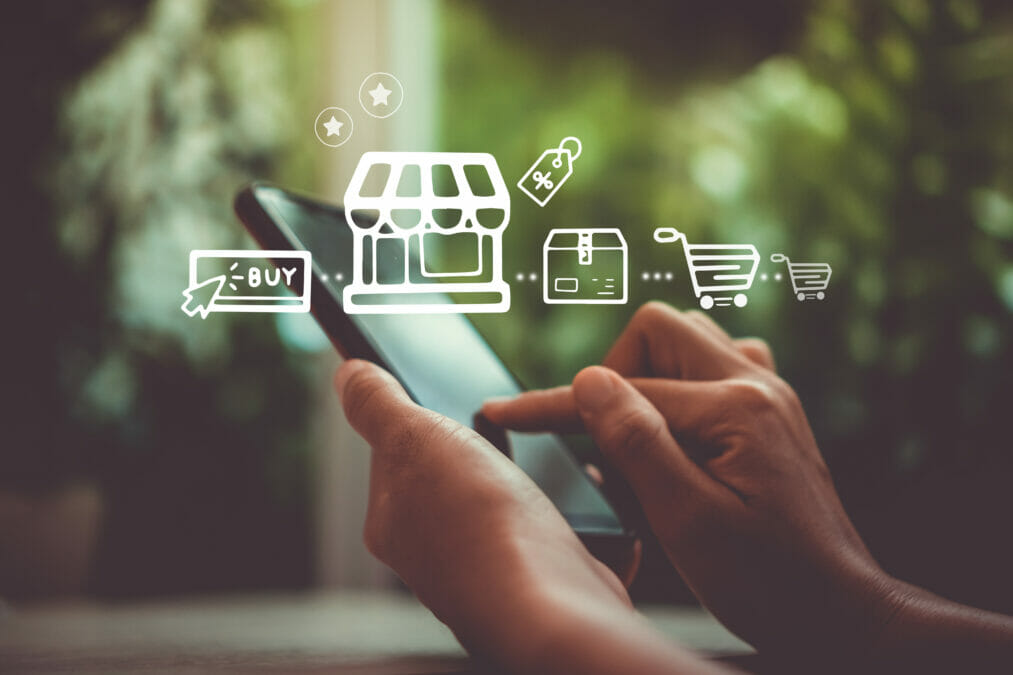According to McKinsey, the pandemic has seen companies skip three to four years of development to digitalise customer and supply-chain interactions in a matter of weeks. In the same period, digital commerce has experienced huge growth as business customers and consumers alike have flocked online. But despite the great leap online (the World Economic Forum estimates the pandemic has led to a 20% total surge in internet usage), digital commerce is still only scratching the surface of what it can achieve.
Now is the time for businesses to tap into users’ willingness to go digital-first. Whether B2B, B2C or D2C, companies need to think beyond selling a single product or service and focus on how to connect and monetise experiences. Today, technology exists to deliver sophisticated digital commerce capabilities that can transform industries and connect ecosystems. Here are three sectors where the digital commerce opportunity is greatest.
1. Pharmaceuticals and healthcare
There is considerable scope for digital commerce to break new ground in both the B2B and B2C channels here. B2B buyers of medical and pharma supplies are increasingly looking for online experiences that mirror their journey when shopping for personal products. This is a complex ecosystem: it covers both drugs and devices, restricted and potentially dangerous products, and comes with a difficult logistics model that includes cold-chain and time-sensitive shipping. Medical and pharma suppliers who can simplify the picture to connect front and back-end systems will capitalise on the demand for digital commerce.
On the B2B side of the coin, the emergence of the digital patient offers a huge opportunity. In the last 18 months, we’ve seen the rapid emergence of telehealth and mHealth solutions that can deliver all the services a patient needs in a single app or platform. From an appointment with a physician, to prescription fulfilment, to ordering further tests and follow-up care. This model is here to stay: the European mHealth market alone is expected to grow 34% between 2021 and 2026. Companies that can connect care providers, mail-order and brick-and-mortar pharmacies, and telehealth services, will be best placed to respond to the needs of the digital patient.
Venturers Club roundtable: driving success within e-commerce
2. Grocery and food shopping
The pandemic led to a massive uptick in online grocery shopping with retailers reacting fast to expand online capacity. Even in immature markets like the US where pre-pandemic, just 3-5% of grocers’ sales were online, this shot up to 20-30% of sales. McKinsey now puts online penetration of the grocery sector in the US at 9-12%, which is in line with mature markets like the UK and France.
And yet, there is room for much more expansion. To build on growth, retailers must continue to invest in technology infrastructure and ensure the digital store is fully integrated with fulfilment. Doing so enables them to prioritise customer experience and provide accurate and efficient delivery every time. It also gives grocers the ability to implement models like click-and-collect in regions such as Germany, where the online grocery market is immature but expanding. Investing in the technology backbone will also enable retailers to futureproof and protect market share against the influx of Q-commerce (‘quick commerce’) providers like Jokr, Weezy and Flink. We’ve seen firms like Ocado do this successfully already with its delivery-in-an-hour Ocado Zoom model in London.
3. Point-of-Sale
Advances in automation mean that any industry with a Point-of-Sale (POS) element is ripe for change. Different markets are already seeing some big moves. One of the most notable is Amazon Go in the UK and US, where the traditional POS – the cashier and checkout – has disappeared entirely. Another example is in the automotive sector where digital car showrooms have taken off, with BMW, Audi and Tesla augmenting their physical POS offering with a virtual version. Gartner predicts that by 2024, this kind of contactless commerce will see 80% of ordering and replenishment become touchless for most organisations.
Today, technology makes it possible to digitise all the essential steps of POS experiences. From ID (who are you?), right management (what are you authorised to buy?) to payment (automated collection) – as well as fulfillment, delivery and return. In the future, this will also include innovations like 2D and 3D visual representations of products to enable customisation, live streaming of products, and the integration of live chat, video chat, and social. The big opportunity lies in the ability of businesses to connect all digitised POS elements.
Is this the end of the Point of Sale (PoS)?
How to seize the opportunity
To get started, organisations need to adopt a modular and composable approach that facilitates new complex and sophisticated digital commerce models. Composable commerce lets businesses select the technology they prefer from multiple vendors, instead of being stuck with a monolithic, out-of-the-box solution. This lets them build intuitive and engaging experiences that integrate with the rest of their existing tech stack in weeks and months, not years. It empowers businesses to hone in on their differentiations. Composable also delivers far greater agility; businesses can change the front end of their digital store ten times a day if they want to, rather than only being able to add their logo and catalogue to a proforma store.
Composable commerce is also critical to futureproofing. Its flexibility allows businesses to integrate new channels, devices, and touchpoints as they are needed – such as voice, IoT and augmented reality. This ability to continuously innovate and iterate new services will be critical as the digital commerce space continues to evolve.








